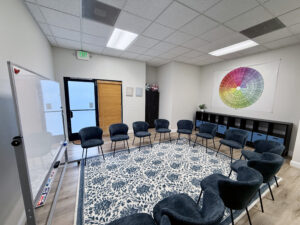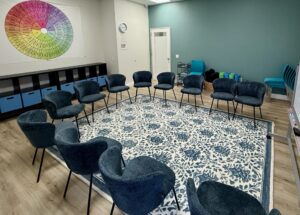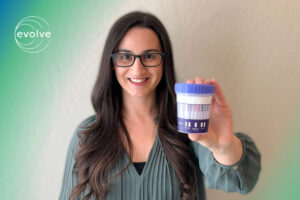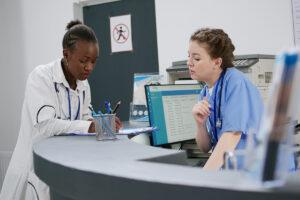Parent Guide: For How to Drug Test Teens at Home
Using a drug test kit at home is an easy and cost-effective way to make sure your teen is on the right path. While it can seem challenging, Evolve is here to walk you through every step so that your child can get the help they need.
Home testing is most effective when used as a preventive measure. Although drug testing can be used as a consequence or to “catch someone,” viewing it as a punishment can lead to increased conflict and resistance. When possible, approaching drug screens from a preventative place allows the opportunity to work together with your teen and to be on the same side. Let them know you support and understand their efforts to improve. This gives you more opportunity to align with your child, which can increase willingness on their part to submit to testing.

Before Testing: Agree on Drug Test Frequency & Consequences
Before drug testing your teen, come to an agreement with them about the frequency of testing and how you will both respond to the results. Having an open and clear conversation and coming to these agreements before starting at home drug testing will help establish clear expectations for everyone and limit future disagreements.
Setting Expectations Before Drug Testing at Home
Ideally, you and your teen would agree on the frequency of testing (1 random test per week vs 2 random tests a week). Ensure there is a sustained period of consistent negative tests and visible progress toward recovery goals before making changes. Consistency, even across households, is key and can improve outcomes. Adjustments, such as reducing testing frequency, should be gradual and only after consistent success at each step. Confirm that everyone involved in the decision-making process agrees on changes to testing frequency, and if your child is in therapy or treatment, always consult their provider before implementing changes. Changing protocol too quickly can increase the risk of returning to use.
Agree that when talking about tests and results everyone will use honest, nonjudgmental language and focus on support and problem-solving, rather than blame.
You should also agree on appropriate and specific consequences (loss of privileges, increased testing, engagement with sober community/sponsor, etc.).
And last, agree that refusing to test at the agreed-upon time will give the impression that recent use has occurred, and this should be considered a positive test result.
How to Choose the Right at Home Drug Test Kit
When drug testing at home, make sure you choose the proper test kit. There are multi-panel drug tests equipped to handle different types of substances. The most important factor when choosing the right drug testing kit is checking which substances are included on the test panel. You want to make sure you use a test that is capable of detecting the substance you are looking for. For example, if your child struggles with amphetamine use, you’ll want to make sure the test you choose can detect amphetamines.
It is important to note that certain substances will not show up on a standard panel test (some examples are alcohol, fentanyl, and mushrooms). However, for some substances (but not all), you can find single test strips that will test for those specifically.
Please note that urine drug screens can indicate the presence of substances in the system but cannot determine current intoxication levels or the exact timing of use. Different substances have varying detection windows, some of which are very short. This is why administering more than one test per week, especially initially, is recommended.
How to Drug Test for Specific Substances
Cannabis (Cannabinoids):
Cannabis is challenging because it can remain in the system for an extended period after use. The duration is dependent on several factors. If cannabis is the main concern for your child, consider going into a local lab to get a THC Levels test.
Alcohol:
If you are in a situation where alcohol is the main concern for your child, a breathalyzer would provide the best results for current intoxication. You can also use an alcohol urine test to detect recent alcohol consumption. These tests work by picking up traces left behind from when alcohol was broken down in the body. EtG or EtS can detect alcohol for up to 80 hours after consumption.
Fentanyl:
Fentanyl is an extremely potent opioid, that is estimated to be 100 times stronger than morphine and 50 times stronger than heroine. Because of its potency and growing presence in a wide variety of substances, including non-opiates, testing for fentanyl may be important to consider if your child has a history of using multiple substances or there are concerns, they may be using a range of drugs.
- Fentanyl Urine Dip Test:This Fentanyl Urine Test can be purchased online.
- This 12-Panel Cup Test includes Fentanyl and Alcohol and can be purchased online.
Mushrooms (Psilocybin):
If mushrooms are a drug you are concerned about, consider reaching out to a lab in your area to see if they offer testing for it. Be mindful that mushrooms metabolize quickly in the system making it challenging to detect after 24hours.
- Mushroom Urine Dip Test: This Mushroom Urine Test can be purchased online.
Types of at Home Drug Tests
Urine Cup Test
A urine test cup with integrated strips detects drugs directly in the sample, displaying results on the cup’s side or via a built-in reader in the lid.
- 6-Panel Cup Test: This 6-panel cup test can be purchased on Amazon and can detect Amphetamine, Benzodiazepines, Cocaine, Morphine/Opiates, Oxycodone, and Cannabinoids. Note, tests often refer to acronyms for these terms – please refer to our FAQs section below.
- 12-Panel Cup Test: This 12-panel cup test can be purchased on Amazon and can detect Amphetamine, Barbiturates, Buprenorphine, Benzodiazepines, Cocaine, Ecstasy, Methamphetamines, Morphine, Methadone, Oxycodone, Phencyclidine, and Cannabinoids.
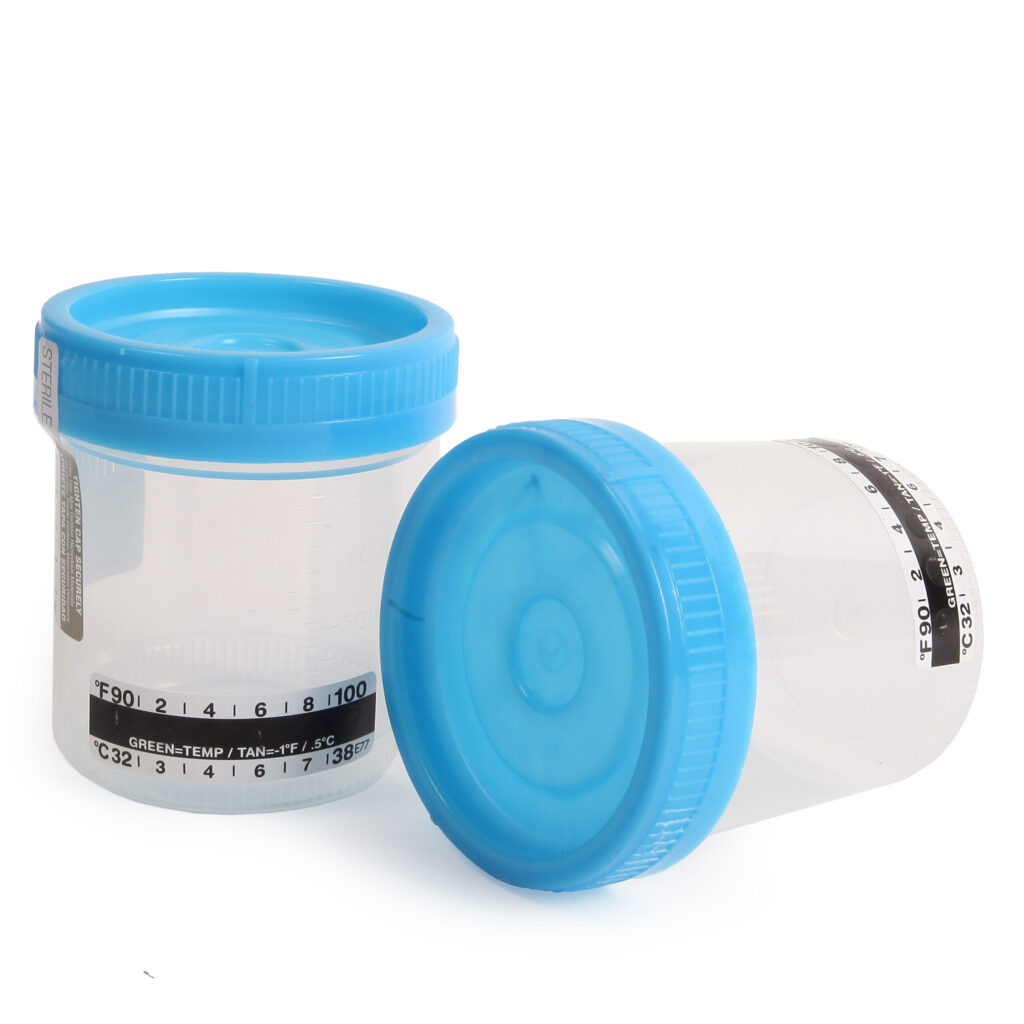
Urine Dip Test
A drug test strip or panel is dipped into a urine sample collected in a container, providing visible results to detect drugs.
- 5-Panel Dip Test: This 5-panel dip test can be purchased on Amazon and can detect Amphetamine, Cocaine, Morphine, Cannabinoids, and Oxazepam/Benzodiazepines.
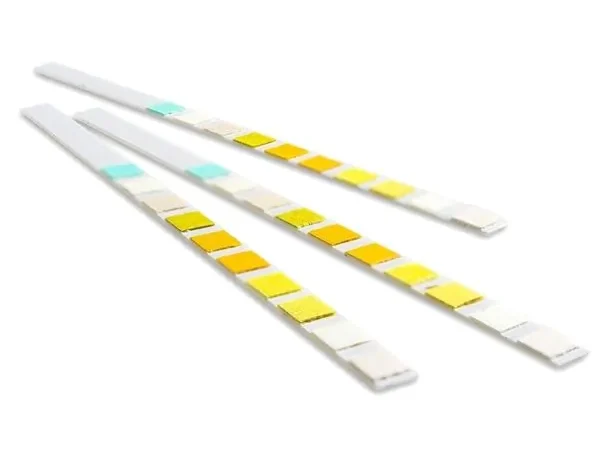
How To Drug Test Teens at Home
Read or watch our step-by-step guide on how to drug test your teen at home.
Step-By-Step How to Drug Test Your Teen
Temperature Reading: Some cups have a temperature reading on the cup. The sample should be between 90-100 degrees. It is important to read this result within 2-4 minutes after collecting the sample. Even if it doesn’t have a temperature reading, when the cup is handed to you, you are looking for the sample to feel body temp. Not too hot and not cold.
Results: When interpreting results, look at the lines for every test strip.
Positive: ONE control line indicates a positive result.
Negative: TWO lines indicate a negative result. This means two lines no matter how faint the second line is.
Invalid: If you see no lines or a missing control line on the test strip, that means the test is not valid and it is not an accurate reading.
What to Remember for Drug Testing Teens at Home
Be Consistent With Protocol
Being consistent with protocol means once you’ve established a testing routine, make sure you are doing that every time you are administering one. We want to be clear with our teens and to give consistent messaging. When we have a set structure, there is less room for pushback and less room for potential arguments or power struggles in the future.
Be Random With Tests
In addition to consistency, we should also be random with tests. For teens, random testing helps maintain accountability during early recovery by addressing motivation dips and thoughts about using. For parents, if you are administering tests randomly, then there is less of a chance they will be able to anticipate testing, which can decrease likelihood of them tampering with the results. It doesn’t make it impossible, but it does make it more challenging.
Be Prepared For Pushback
Make sure you’re prepared for pushback. Sometimes when you request a drug test, they may respond with an excuse or tell you it’s not a good time. Regardless of the reason, you want to be prepared on how you’re going to respond. Even if they have a good reason, don’t veer from being consistent with protocol. And remember to only request a test if you have time to wait, reducing pushback and ensuring they successfully take it.
How to Handle Common Teen Excuses for Drug Testing
Navigating conversations about drug testing with your teen can be challenging, but preparation can make a significant difference. Here are common things your teen might say during these moments, along with empathetic responses to maintain trust while staying consistent with your approach.
Provide positive feedback for honesty while ensuring the drug test is still taken. After taking the test, discuss the situation using nonjudgmental language, validate struggles, and apply agreed-upon consequences. Following protocol is crucial, as admissions may not always reveal the full extent of use.

Teen
“I don’t have to pee right now.
Can we do this later?”
Parent
“I get it. Let’s grab you a glass of water and we can watch something until you do have to go” or “I’m here in the kitchen so you can do your homework here at the table until you do have to go.”
Teen
“I’ll be late for school/practice.
Let’s do it later.”
Parent
Note: Be proactive in avoiding this by not asking for a test unless you have time to spare. Sometimes they will share why it’s not a good time, be ready to respond.
Teen
“You don’t trust me. You’re asking because you think I’ve used.”
Parent
“I understand why it might feel that way and me asking right now does not mean that I think you used. This is the protocol we agreed to and that’s why I’m asking. I appreciate following through with our agreement, which helps in us rebuilding trust.”
Teen
“Why are we still doing this? I’ve been sober for 3 months. I don’t want to keep doing this.”
Parent
“I hear that it feels unfair. You have been putting in a lot of effort and I notice that. I do need you to take the test today because it’s part of the agreement and if you want to talk about adjusting that, we can touch base in our next family session” (or whenever makes sense for your family).
Teen
“We don’t need to test. I did smoke over the weekend so it will be positive…”
Parent
“I appreciate you being honest. Even though I know it will be positive, I still need you to take the test since it’s what we’ve agreed to but I’m glad you told me. We can check in about that after.”
How to Respond to Positive Drug Test Results
You should speak with your teen before you start drug testing them at home to agree upon the frequency of testing and HOW you will both respond to the results. Ideally, you and your teen will have already agreed on how to talk about the results and what would happen if the results were positive. Let’s break down how to respond in the moment.
Sit With Your Emotions
After you get the test results, take a moment before addressing it with your teen. Notice your emotions and make sure they are not in the driver’s seat. The goal is to respond rather than react and focus on the most helpful way to proceed.
Share With Your Teen
Share this with your teen and give them the opportunity to acknowledge recent use and share what happened. Plan to allow space for honesty and then respond in a nonjudgmental way. Validate any struggles that may have contributed to the drug use.
Are they being honest?
If they are honest about using, provide positive reinforcement– “Thank you for your honesty– that really helps with rebuilding trust and gives me the chance to support you.”
Are they denying?
If they deny any recent use, resist urges to push or argue. That can feel really challenging in these moments but instead, offer to complete another test and reiterate that you can only go off what the test says. If your teen continues to deny recent use, suggest getting tested at a lab to ensure accurate results. Additionally, consider reaching out to your child’s medical professional to determine if any of their prescribed medications could have contributed to the positive result.
Moving Forward
Implement the previously agreed-upon consequences for positive tests, keeping in mind that risks vary by substance and false positives can occur due to medications or foods. A positive result alone doesn’t confirm the need for treatment; consult a medical provider or seek an assessment from a counselor or treatment center if concerned about substance use disorder.
Warning
Certain substances indicate more immediate cause for concern than others due to the increased risk of overdose and withdrawal symptoms. If your child is testing positive for opiates, fentanyl, cocaine, methamphetamines, or benzodiazepines, this would be an indicator to seek professional evaluation and to consider treatment.
Contact Evolve’s admissions team today for a free phone assessment to help determine what level of care your teen needs.
Frequently Asked Questions About Teen Drug Testing
How often should I drug test my teen?
This depends on your agreement with your teen. A common starting point is 1–2 random tests per week, especially in early recovery or when concerns about substance use are high. Random and frequent testing can help catch recent use without relying on detection windows.
How long can drugs stay in a teen’s system for testing?
How long a drug remains detectable depends on the type of drug, how much was used, and individual factors like metabolism and frequency of use. For example:
Marijuana: 1–30+ days depending on use frequency.
Cocaine: 1–3 days.
Alcohol: 12–24 hours (via urine).
Although the above mentions Marijuana, Cocaine and Alcohol, we acknowledge that there are more substances to consider and these are just examples of a few.
Can I detect every substance with a standard drug test?
No, standard tests may not detect substances like alcohol, fentanyl, mushrooms, or inhalants. You may need to purchase single-test strips or higher-panel tests for specific substances.
How do I know which drugs to test my teen for?
Consider your child’s substance use history or consult with a professional. Higher-panel tests or specific single-strip tests can be useful for more comprehensive screening.
How accurate are at-home drug tests?
Most at-home drug tests are accurate but not infallible. Medications or certain foods can cause false positives. Confirm unexpected results with a lab test or your child’s healthcare provider.
What are the drug name abbreviations found on at-home drug tests?
When drug testing your teen, you will often see abbreviations like the below on the drug testing kits.
AMP: Amphetamine
BAR: Barbiturates
BUP: Buprenorphine
BZO: Benzodiazepines also known as Oxazepam
MDMA: Ecstasy (methylenedioxymethamphetamine)
MET/mAMP: Methamphetamines
MOP/OPI: Morphine (Opiates)
MTD: Methadone
OXY: Oxycodone
PCP: Phencyclidine
THC: Cannabinoids
Check out our comprehensive guide on Drug Names and Teen Slang.
Should I stop drug testing if my teen has several negative results?
Gradually reducing the frequency of testing can be considered after an extended period of consistent negative results and visible progress in their recovery. Discuss this with your teen’s treatment provider.
Why should I drug test my teen at home?
Home drug testing can serve as a preventive measure and accountability tool to support your teen’s recovery journey. It provides an opportunity for open conversations and helps build trust when approached collaboratively.
My teen is struggling with addiction, are there support options for me or our family?
Yes, there are several support options for families. Substance use affects the whole family, not just the individual using substances. Seeking professional guidance or joining mutual support groups like SMART Recovery Friends and Family, or Al-Anon, offer valuable resources and a sense of community for those in similar situations.
Evolve also offers a free virtual parent support group for parents of teens who are struggling with substance use or mental health issues. Sign up today!
Where can I purchase at home drug tests?
You can purchase at home drug tests online from multiple websites including 12panelnow.com or even Amazon. Please see the tests linked above under the How Do I Find The Right Test For My Teen?
Can at home drug test's have false positives?
Yes, certain foods and medications can cause false positives. Consult with a medical professional to help determine what could have contributed to the positive test result. An example of this could be a positive result for PCP after having taken certain cold medicines containing Dextromethorphan. If your teen did not recently have a medical reason for taking cough medicine, this could be a sign of misuse of over-the-counter medication to get high.
Additional Resources
Looking for additional resources? Check out our links below to continue.

This parent webinar reviews current drug trends in teens, warning signs of drug use, and recommended interventions.

Learn more about the different levels of care and treatment approaches for teens who are struggling with substance use.

Learn about types of substances, including the drug class, common slang terms, and emojis associated with them.
Loved our Parent Guide? There’s plenty more on the way! Share and subscribe for updates on future guides, insights, blogs, and more from the team at Evolve.
More questions? We’re here for you.
Not ready for a call? Contact our admissions team in the form below to learn more or to schedule a free assessment.










